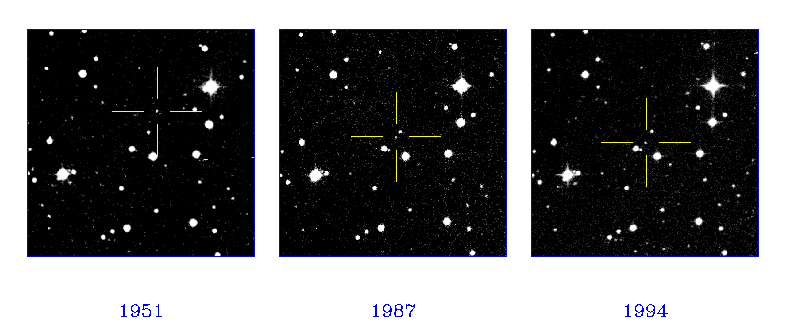Brown dwarfs, white dwarfs and other dark matters
My research interests are primarily concerned with very low luminosity
degenerate stars:
brown dwarfs
and white dwarfs. It is only relatively recently that telescopes/instruments
and observing techniques have become powerful enough to detect these objects.
Ultimately, the goal of my research is to determine the contribution that
such stars make to missing mass problems in astronomy.
Recently, I discovered a new very cool white dwarf
in the constellation of Taurus. This object has been subsequently
shown to be one of the coolest and therefore oldest white dwarfs
ever found, and has been shown to be a member of a hitherto unobserved
and possibly large population of faint stars in the Galactic Halo.
The existence of such a population could partially explain the
nature of dark matter in the halo our Galaxy.
The object, named WD0346+246, was serendipitously discovered
as a faint, very fast moving star on a sequence of
photographic plates. These plates, taken with the
UK Schmidt Telescope
in Australia and digitised with our local precision plate scanning
machine
SuperCOSMOS
, showed that the object was traversing the sky at 1.3
arcseconds per year, which is much faster than the majority of the
Sun's neighbours. This high apparent velocity is a characteristic of
halo stars which are very old and are traveling on inclined elliptical
orbits around the Galaxy.

These images are digitised scans of photographic plates showing the
motion of WD0346+246 over 43 years. The epochs of the three images are
(from left to right) 1951.91, 1987.92 and 1994.99. The first image
uses the Red (0.7 microns) passband, while the last two are in the I
(0.8 microns) passband.
|
